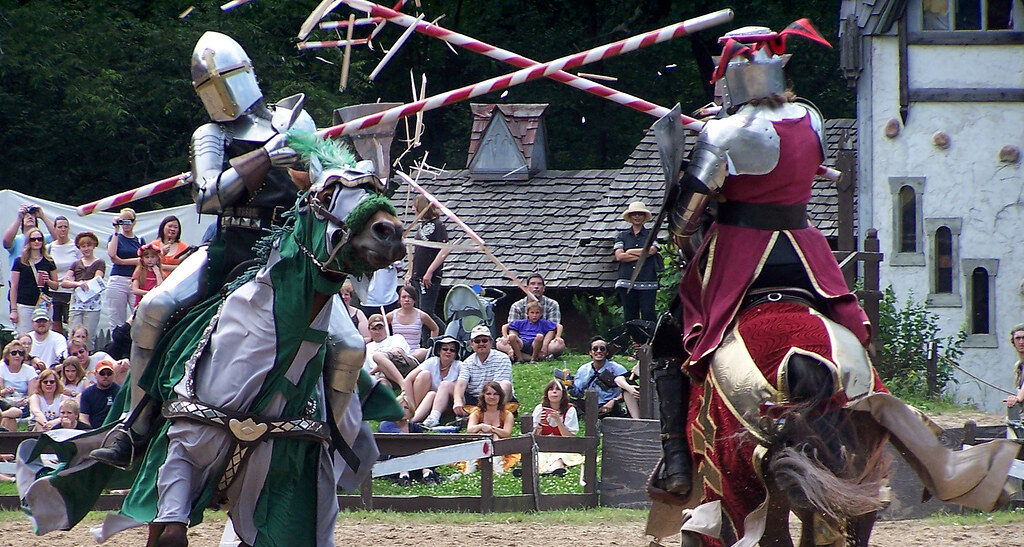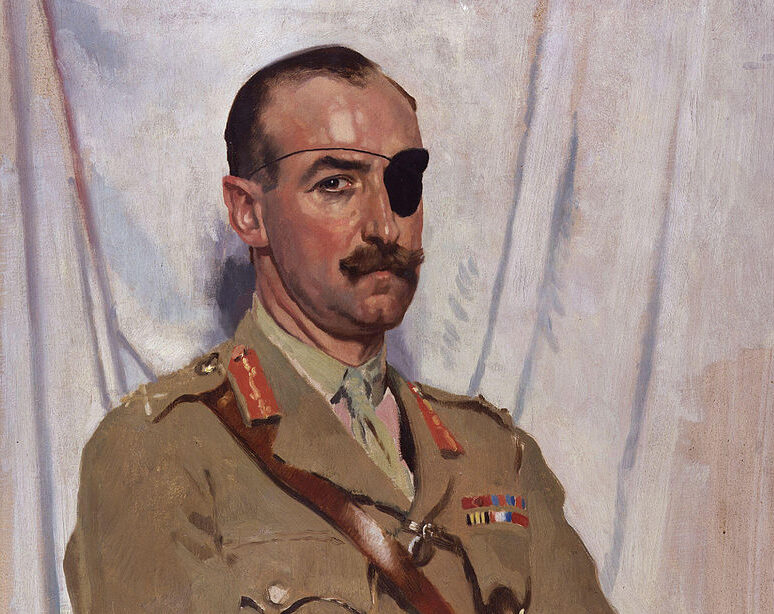The destrier was the war horse of the medieval knight – a gigantic beast of fearsome proportions, heavily armoured with huge hooves, iron shod and fitted with sharp prongs for stamping on fallen enemies.
Oh, and they were always black! Well…not quite. But you’d be forgiven for thinking so, thanks to blockbuster moviemakers showing us their singular interpretation of the medieval knight and his mount.
- Power Over Beauty
- Colour Matters
- Duel Purpose Horses
- A Horse Built for Speed
- The Joust
- The Greatest Knight…and his Horse!
- A Valuable Asset
- Everything Changes
I am sorry to burst this Hollywood bubble but a destrier is not an extinct breed of horse in its own right. Rather it is a type of horse and not of the enormous shire variety either.
Read More: 800 Year old Complete Chain Mail Vest Discovered
Certain breeds were more suited for riding into battle and these are the war horses known in the day as destriers. Destriers were highly prized and had certain traits in common.
Power Over Beauty
Usually stallions, they were well muscled and short backed. They had powerful hind quarters enabling them to stop, leap or turn easily. They were agile with strong bones, had been painstakingly trained and were strong enough to bear their armoured riders.
Read More: Medieval Sword Found in Poland
You’d be right in thinking that a destrier sounded like an expensive commodity in medieval Europe. In fact they were possibly the most expensive of all equine assets.
In 1330, Edward the Black Prince purchased 3 destriers. One, a grey horse for £120, a dappled grey for £70 and a bay (a reddish-brown or brown body colour with a black mane, tail, ears, and lower legs) for £50.

According to the Bank of England’s inflation calculator, that lovely grey war horse set Edward back a cool £103,318.64 or thereabouts in today’s money.
According to this and other records from the time, it seems that body colour played a part in how much a horse was worth with grey being rare and more valuable. Grey horses were often reserved for use on special occasions or for those of very high social status.
Colour Matters.
In the medieval romances, grey or white horses were the preserve of the noblest and most exceptional of knights. Slightly cheaper was a dappled grey, then a bay and interestingly black (that Hollywood favourite) bringing up the medieval rear as the cheapest option!
Why? I hear you ask. Ironically for the same reason that Hollywood loves them so much; black horses have a dark and fearsome cinematic look about them.
In medieval stories, black horses, or the riders of them are usually associated with the devil. By contrast, a black horse with white markings was desirable.
Like Black Beauty with his single white foot and white star on the forehead, the contrast of white on black was and still is thought to be visually striking.
Read More: Mastering the Art of the Medieval Poleaxe
This is something that still plays a part today in terms of competition where the looks of the horse are of value.
Duel Purpose Horses
During the middle ages horses were not usually identified by breed but instead by their function in society. A range of interchangeable descriptions were used to describe them.
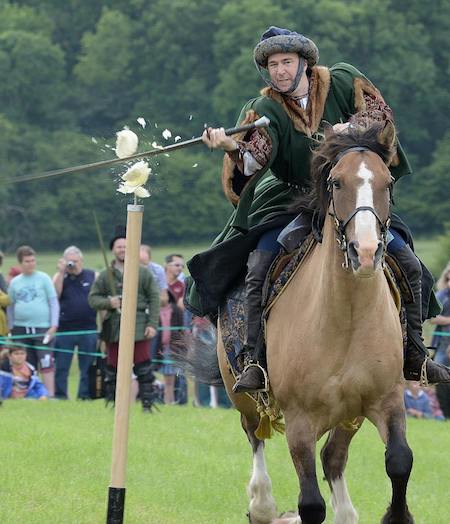
A charger was any horse which could be used in battle. However, certain breeds of horse were favoured by knights, but that is not to say that destriers were the only type of horse they would ride. On the contrary, a knight would have owned different horses for different purposes.
Destriers, strong and agile were the ideal war horse and exclusively for wealthy knights to ride into battle. Among the most common breeds of destrier are believed to be friesians, percherons, andalusians and arabians.
Of these breeds, the percheron was the largest but even then, they were probably not so big as the modern percherons of today. Recent studies of medieval horse burials and horse armour show that the destrier was unlikely to be the gigantic draft stallion we are used to seeing today.
In fact, they were a shorter horse standing around 15 hands high at the tallest.
A knight would have also owned palfreys. Used for everyday travel, a palfrey was expensive but smaller than a destrier and offered a smoother, more comfortable ride. It was generally used by wealthier folk for travelling around or hunting etc.
A Horse Built for Speed
A corser was also a favourite, both fast and strong it was occasionally used in battle when speed was necessary. It was also used by lesser knights as they were still expensive but more affordable than a destrier.
Rouncys were the smallest and a good all-rounder. They could be found carrying loads or acting as battle mounts for poorer soldiers.
They were also the preferred mounts of archers. Besides this and a far cry from the destrier, there were the average common hacks (short for hackney). The hack was a good, ambling horse used for general riding and travelling about for less exalted personages.
What is clear is that horses, in all their variety formed a crucial part of life in medieval Europe. They were essential in everything from battle to transport, farming and travelling for all walks of life.
The Joust
An example of what could be achieved by success in the joust is most famously portrayed by the ‘Greatest Knight’, William Marshal, Earl of Pembroke. William was the younger son of a lord.
Read More: War Horse: A Brief History of Horses on the Battlefield
As a younger son he would not stand to inherit but would have to make his own way in the world. So, at the tender age of 13, William was sent away to live and train as a knight in the household of William of Tancarville. This was normal practice for sons of nobles.
During his training, his father passed away and as the second son he was left with nothing. He had little choice but to use his already evident skills eking out a living on the tournament battlefield.
The joust developed over time to the version we are most aware of today with purpose-built tiltyards within an arena known as the lists. But in these early days it did not only include charging at your opponent on horseback with a lance.

It also involved fighting on foot or duelling with a sword. Then, a battle-axe and dagger should the knight be unhorsed or engaged in close quarters combat on horseback. These were all skills that might be necessary on the medieval battlefield.
A knight really would require a destrier or equivalent charger type to enter the joust. If he did not have the money to buy his own destrier he had the opportunity to acquire one by battling it out with another knight and winning. This was most definitely the case for the young William Marshall.
The Greatest Knight…and his Horse!
Close contemporary accounts of William are clear in their appraisal of the talents of the young knight. Even as a young man he was physically strong, an excellent horseman, strategic in his thinking and highly skilled with both lance and sword.
At one tournament in Normandy he was said to have captured ten knights and twelve horses in one day! William became a very rich man thanks to these successes and his heroic exploits would not go unnoticed.
Eventually, this exceptional man rose to prominence serving as Marshal for five successive English kings.
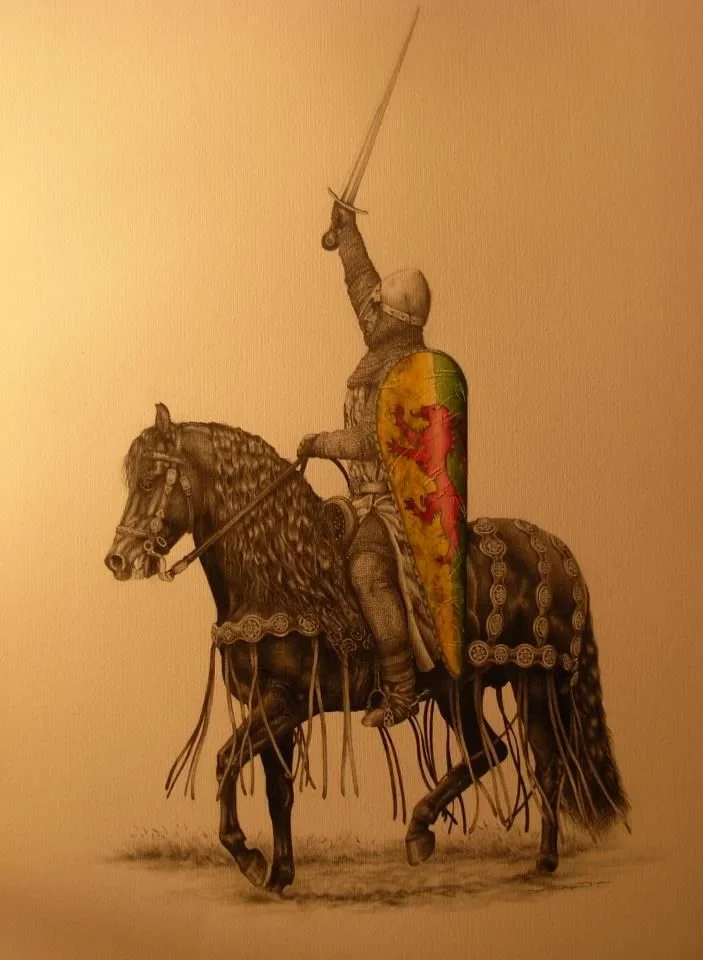
Under his tenure as Marshal he is credited with convincing King John to sign the Magna Carta. This brought peace in England for some time. Later, he acted as regent for the young King Henry III. This avoided a French king laying claim to the English throne.
During a joust in the days of William Marshall, a knight might have used a charger which would have allowed for greater speed. Or, he could have used a destrier which was heavier and more stable.
A Valuable Asset
These highly prized horses were looked after by grooms during the tournament. They would have worn armour of their own to protect them from potentially lethal splinters should a lance be shattered.
Read More: Sex in Camp! The Groupies of the Middle Ages?
Over the top they would have worn a decorative cloth called a caparison featuring their rider’s heraldry. This offered a clear identification of the knight fighting beneath the armour.
Special spurs, stirrups and saddles were developed throughout the medieval period to improve control of the horse. This allowed the knight to focus on aiming the lance.
Jousting was dangerous for both the knight and his horse. It could also be incredibly costly with horses and quality weapons often changing hands should a wager be lost.
By entering the joust therefore, a knight risked potentially finding himself without his destrier either through losing or injury. Or indeed, becoming very wealthy!
Everything Changes
As the middle ages progressed, specialist suits of armour were developed for wearing during the joust. These were almost double the weight of the plate armour used in battle and necessitated the need for stronger horses.
Later on, during the age of chivalry, the joust became more for sport or entertainment than actual battle practice. The hand-to-hand duels also became more gentlemanly affairs.
It is clear to see how fundamental a part of life horses were for medieval society. They were crucial at all levels and an especially essential part of life for the medieval knight.
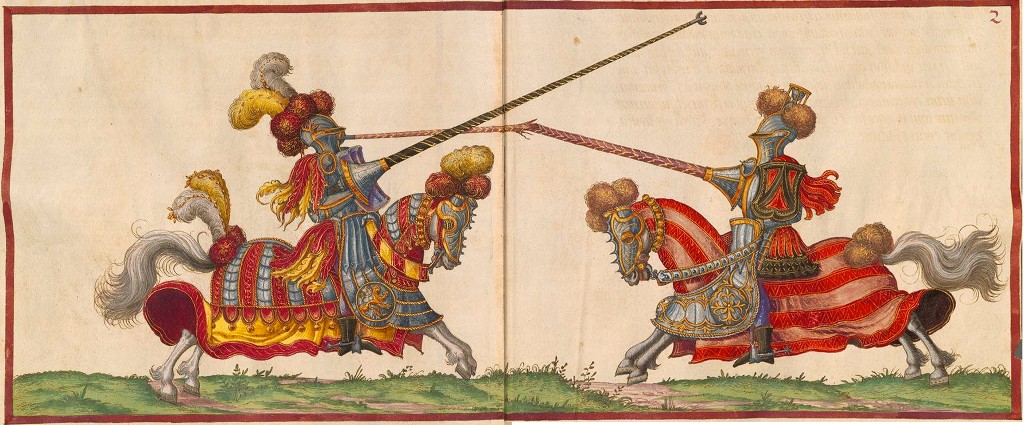
Horses were highly prized and this was reflected in the care and respect with which they were treated by their owners. The need for good-quality horses for knights has led to the development and evolution of the larger breeds of horses known today as percherons and friesians.
With many things in these ages of political unrest and turmoil, military developments come and go and the destrier (and his plate armoured rider) had its moment of glory. Then, as warfare changed so too would the use of horses in battle.
Read More: There is a Medieval Castle Being Built in France
As developments in other fighting technologies took place and kings stopped riding out into battle, the need for great and powerful warhorses gradually declined. And this heralded in a new age of the lighter faster variety seen in use in later centuries.
The heavy warhorse had left the battlefield.
